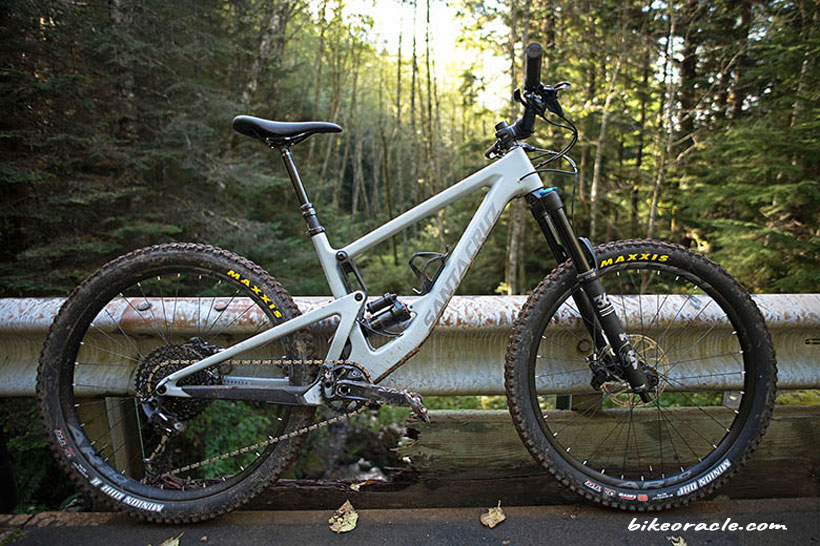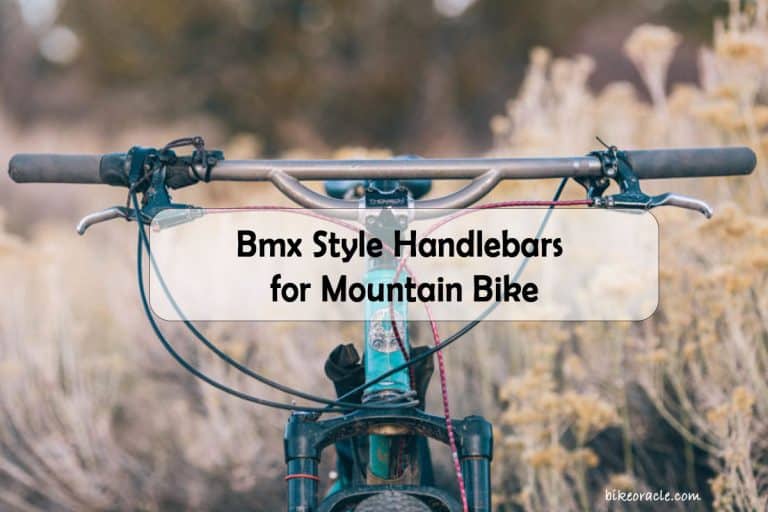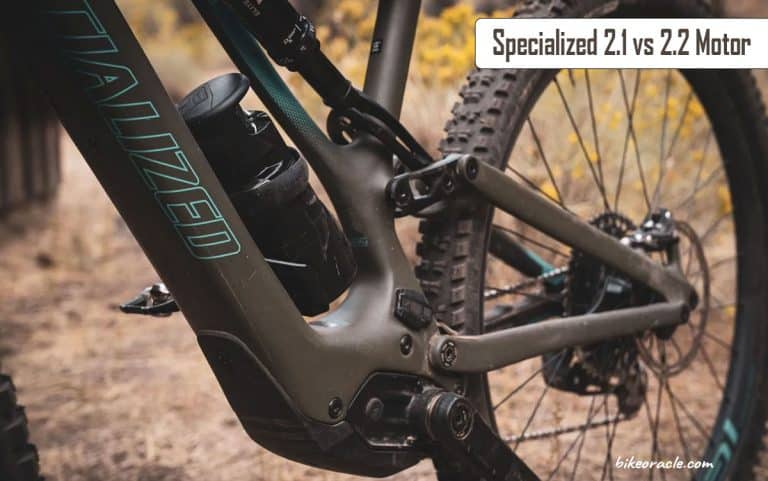Converting Mountain Bike To Road Bike – A Detailed How-To Guide

Converting your trusty mountain bike into a sleek road machine brings forth a multitude of benefits. Not only does it breathe new life into your existing bike while saving you precious bucks, but it also opens up a world of cycling possibilities. Picture yourself seamlessly transitioning from off-road adventures to cruising along smooth roads.
But before you dive into the conversion process, need to explore some crucial factors to consider. Firstly, evaluate your riding needs and determine if converting your mountain bike aligns with your cycling goals. Consider the terrain you will primarily ride on, your desired speed, and the level of comfort you seek. Additionally, assess your mechanical skills and tools available to ensure you can handle the conversion process effectively.
10 Key Steps To Converting Mountain Bike To Road Bike
Converting a mountain bike to a road bike involves several key steps. These include evaluating your mountain bike, upgrading the wheelset, swapping the tires, changing the gearing system, upgrading the braking system, replacing the handlebars and shifters, adjusting the bike fit, upgrading the pedals and cleats, enhancing aerodynamics and efficiency, fine-tuning and testing, and considering additional factors such as budget-friendly tips and maintenance.
1. Evaluating Your Mountain Bike
A. Choosing the Right Mountain Bike for Conversion
Not all mountain bikes are suitable for conversion to road bikes. Opt for a mountain bike with a frame and fork that allows for sufficient tire clearance and supports a road bike wheelset. Consider frames with a more relaxed geometry and ample mounting points for accessories.
B. Assessing the Frame and Fork
Inspect the frame and fork of your mountain bike for any signs of damage or wear. Ensure that they are in good condition and compatible with road bike components. Look for mounting points for fenders and racks if you plan to add these accessories.
C. Checking the Wheel set and Tires
Evaluate the current wheel set of your mountain bike. Determine if it is compatible with road bike tires and whether it can accommodate narrower tires for increased speed and reduced rolling resistance. Ensure the wheel set is in good condition and true.
D. Analyzing the Drivetrain and Gearing System
Assess the drivetrain and gearing system of your mountain bike. Consider whether the current gear ratios are suitable for road cycling. Evaluate the condition of the chain, cassette, and derailleurs. Determine if any upgrades or replacements are necessary for smoother shifting and optimal performance.
2. Upgrading the Wheel set
A. Understanding Road Bike Wheel Standards
Road bike wheel standards play a crucial role in selecting the appropriate wheel set for your conversion. Common road bike wheel sizes include 700c and 650c, with 700c being the most popular.
These measurements refer to the diameter of the wheel, with 700c being larger than 650c. Additionally, consider the rim width, which affects tire compatibility and overall ride quality. Road bike wheel sets often have narrower rims compared to mountain bike wheel sets.
B. Choosing the Appropriate Road Bike Wheel set
When selecting a road bike wheel set for your conversion, consider factors such as weight, aerodynamics, and intended riding style. Look for lightweight options with aerodynamic features such as deep-section rims or bladed spokes for improved speed.
Carbon fiber wheel sets offer the advantage of reduced weight and enhanced stiffness, while alloy wheel sets provide durability at a more affordable price point. Additionally, pay attention to the hub quality and bearing type for smooth rolling and longevity.
C. Installing the New Wheel set
To install the new road bike wheel set, begin by removing the old wheel set from your mountain bike. Detach the brake calipers to create enough clearance to remove the wheels. Install the new wheel set by sliding it into the dropouts and ensuring proper alignment with the brakes. Tighten the quick-release skewers or axle nuts securely. Double-check the wheel alignment, ensuring it sits straight within the frame.
D. Adjusting Brakes and Clearances
With the new road bike wheel set installed, adjust the brakes to accommodate the narrower rims. Align the brake pads to sit correctly on the braking surface of the rims. Check for even and sufficient clearance between the brake pads and the rim.
Adjust the tension of the brake cable if necessary to achieve optimal braking performance. Ensure that the brakes engage smoothly and provide reliable stopping power without any interference or rubbing against the rims.
3. Swapping the Tires
A. Differences Between Mountain Bike and Road Bike Tires
Mountain bike tires and road bike tires have distinct characteristics suited to their respective terrains. Mountain bike tires typically feature a wider width and knobby tread patterns for enhanced traction on rough and off-road surfaces. In contrast, road bike tires are narrower and have smoother tread patterns, optimized for low rolling resistance and increased speed on smooth pavements.
B. Selecting the Ideal Road Bike Tires
When it comes to choosing road bike tires for your conversion, you need to consider few important factors. Firstly, narrower tire widths, usually between 23mm to 28mm. Secondly, the tread pattern, rolling resistance, and puncture protection.

These features will impact the tire’s performance and durability on the road. Opt for tires with a slick or lightly threaded pattern for reduced rolling resistance. Consider puncture-resistant features such as reinforced casings or anti-puncture layers to minimize the risk of flats during road cycling.
C. Removing Mountain Bike Tires
To remove mountain bike tires, release the air pressure by unscrewing the valve stem. Use tire levers to gently pry the tire bead off the rim. Work around the circumference of the tire, gradually lifting one side of the tire bead until it pops off the rim. Repeat the process for the other side of the tire until the tire is completely detached from the rim.
D. Mounting Road Bike Tires on Your Mountain Bike
To mount road bike tires on your mountain bike, begin by inserting one side of the tire bead into the rim. Starting from the opposite side, use your hands to work the tire bead onto the rim, gradually moving around the circumference.
If necessary, use tire levers to assist in mounting the tire, ensuring you apply gentle pressure to avoid damaging the inner tube. Inflate the tires to the recommended pressure and double-check that the tire beads are properly seated on the rims.
4. Changing the Gearing System
A. Road Bike Gearing vs. Mountain Bike Gearing
Road bike gearing and mountain bike gearing differ in terms of gear ratios and intended use. Road bike gearing typically focuses on higher gear ratios for faster speeds on flat or rolling terrain. Mountain bike gearing, on the other hand, emphasizes lower gear ratios to facilitate climbing steep inclines and maneuvering through challenging off-road conditions.
B. Determining the Desired Gearing Ratio
When changing the gearing system of your mountain bike to a road bike setup, consider the terrain you’ll primarily encounter and your preferred cadence. Calculate the desired gearing ratio by analyzing the gear inches or gear development. Gear inches represent the effective diameter of the wheel multiplied by the gear ratio, providing a measure of the bike’s mechanical advantage.
C. Replacing the Crankset and Front Derailleur
To achieve the desired gearing ratio, replace the mountain bike crankset with a road bike crankset that offers the appropriate chainring sizes. Road bike cranksets typically feature larger chainrings for higher speeds. Remove the old crankset by loosening the crank bolts and carefully sliding it off the bottom bracket spindle.
Install the road bike crankset, ensuring proper alignment and torque.Replace the front derailleur with a road bike front derailleur compatible with the new crankset’s chainring sizes. Adjust the front derailleur’s height, rotation, and limit screws to achieve precise shifting between chainrings.
D. Adjusting the Rear Derailleur
After changing the front gearing, assess the compatibility of the existing rear derailleur with the desired gear ratios. Ensure the rear derailleur has sufficient capacity to handle the range of gears provided by the road bike cassette.
Adjust the rear derailleur’s limit screws, cable tension, and indexing to achieve accurate and smooth shifting throughout the gear range. Test the shifting performance by cycling through the gears and making any necessary fine-tuning adjustments.
5. Upgrading the Braking System
A. Overview of Road Bike Braking Systems
Road bike braking systems encompass various options, including caliper brakes, cantilever brakes, and disc brakes. Caliper brakes are the most common choice for road bikes, offering lightweight and reliable braking performance. Cantilever brakes are typically found on older road bike models, while disc brakes provide superior stopping power and modulation in all weather conditions.
B. Choosing the Right Road Bike Brakes
When it comes to choosing road bike brakes, you need to consider several factors. Weight, braking power, modulation, maintenance requirements, and compatibility with your mountain bike’s frame and fork should all be taken into account.
Caliper brakes are available in two designs: single-pivot and dual-pivot. Dual-pivot brakes are preferred for their enhanced braking power. Disc brakes, on the other hand, provide consistent stopping power and work well in wet conditions.
C. Removing the Mountain Bike Brakes
To remove the mountain bike brakes, release the tension on the brake cable by loosening the pinch bolt or quick-release mechanism. Unscrew the mounting bolts attaching the brake calipers to the frame and fork. Carefully detach the brake calipers, ensuring you don’t damage the brake cables or housing.
D. Installing the Road Bike Brakes
Install the road bike brakes by aligning the brake calipers with the mounting points on the frame and fork. Securely tighten the mounting bolts to the recommended torque. Connect the brake cables to the new calipers, ensuring proper tension and alignment.
Test the brakes by squeezing the brake levers to verify smooth engagement and optimal stopping power. Make any necessary adjustments to cable tension or brake pad alignment for precise and reliable braking performance.
6. Upgrading the Handlebars and Shifters
A. Benefits of Drop Handlebars for Road Biking
Drop handlebars offer several advantages for road biking. They provide multiple hand positions, allowing cyclists to adjust their posture and reduce fatigue during long rides. The lower hand position on the drops promotes a more aerodynamic riding posture, improving speed and efficiency. Drop handlebars also offer greater control and stability, especially when descending or navigating technical sections.
B. Selecting the Right Handlebars and Shifters
When selecting handlebars and shifters for your road bike conversion, consider factors such as material, shape, reach, drop, and compatibility with your bike’s stem. Aluminum and carbon fiber are common handlebar materials, with carbon fiber offering lighter weight and enhanced vibration dampening.
Choose handlebars with a shape that suits your riding style and preferences, whether it’s a traditional round bend or an ergonomic shape with flattened tops.
Select road bike shifters compatible with the handlebars you choose. Integrated shifters combine the brake levers and shifters into a single unit, offering convenient shifting while maintaining control of the brakes.
C. Removing the Mountain Bike Handlebars
To remove the mountain bike handlebars, begin by loosening the stem bolts using an appropriate wrench. Carefully slide the handlebars out of the stem while ensuring you don’t damage the cables or housing. Disconnect the brake and shifter cables from the handlebars, noting their routing for reinstallation.
D. Installing the Road Bike Handlebars and Shifters
Install the road bike handlebars by sliding them into the stem and aligning them with your desired position. Ensure the handlebars are centered and at the appropriate height and reach for your riding comfort. Secure the handlebars by tightening the stem bolts to the recommended torque.
Connect the brake and shifter cables to the new handlebars, following the previous cable routing. Adjust the cable tension and fine-tune the shifter indexing for precise and smooth shifting. Test the handlebars and shifters to ensure proper operation and comfort while riding.
7. Adjusting the Bike Fit
A. Importance of Proper Bike Fit for Road Cycling
For road cycling it is essential to achieve the right bike fit. It improves comfort, efficiency, and mostly reduces the risk of injuries. A proper fit ensures optimal power transfer, minimizes joint strain, and maintains an aerodynamic riding position. Take the time to adjust your bike fit for an enhanced road cycling experience.
B. Adjusting the Saddle Height and Position
To adjust saddle height, stand next to the bike and position the saddle at hip height. When seated with one foot on the pedal at its lowest point, there should be a slight bend in the knee (approximately 25-30 degrees). Loosen the seat post clamp, adjust the saddle height, and tighten the clamp securely.
Optimize the saddle position by adjusting its fore-aft position. Sit on the saddle and ensure your knee is aligned with the pedal axle when the pedal is at the 3 o’clock position. Fine-tune the saddle position to achieve a balanced and comfortable pedaling motion.
C. Optimizing the Handlebar Position
Adjust the handlebar position to achieve a comfortable and aerodynamic riding posture. Begin by setting the handlebar height based on your flexibility, riding style, and desired comfort level. Lowering the handlebars provides a more aerodynamic position but may sacrifice comfort for some riders.
Fine-tune the handlebar angle by adjusting the stem’s angle or using spacers to achieve a position that allows for a natural wrist alignment and optimal control. Experiment with different positions and test rides to find the most comfortable and efficient handlebar setup for your road cycling needs.
D. Fine-tuning the Bike Fit for Comfort and Efficiency
Once the saddle height and handlebar position are adjusted, fine-tune other aspects of the bike fit to optimize comfort and efficiency. Consider adjusting the saddle tilt to ensure even weight distribution and minimize discomfort.
Experiment with different handlebar widths, stem lengths, and angles to find the best fit for your body proportions and riding style. Take test rides and make necessary adjustments to achieve the perfect balance between comfort and performance.
8. Upgrading the Pedals and Cleats
A. Benefits of Clipless Pedals for Road Cycling
Clipless pedals, despite the name, offer significant advantages for road cycling. They provide a secure and efficient connection between the cyclist’s shoes and the pedals, improving power transfer and pedaling efficiency. With clipless pedals, riders can pedal through the entire rotation, maximizing power output and reducing energy wastage. Clipless pedals also enhance control and stability, especially during high-speed or sprinting efforts.
B. Choosing the Right Road Bike Pedals and Cleats
When selecting road bike pedals, consider factors such as pedal weight, engagement mechanism, float options, and compatibility with your cycling shoes. Look for pedals that offer a lightweight design without compromising durability and reliability. The engagement mechanism, whether it’s a traditional SPD-SL system or a different system, should provide secure and easy engagement and disengagement.
Choose cleats that are compatible with the chosen road bike pedals. Consider the amount of float the cleats provide, which allows for a small amount of lateral movement of the foot during the pedal stroke. Opt for cleats that match your preferred float range and allow for efficient power transfer.
C. Removing the Mountain Bike Pedals
To remove the mountain bike pedals, use a pedal wrench to turn the pedals counterclockwise. Apply force in the direction opposite to the bike’s forward movement. Loosen the pedals until they can be unscrewed completely from the crank arms.
D. Installing the Road Bike Pedals and Cleats
Install the road bike pedals by screwing them into the crank arms using a pedal wrench. Apply a suitable amount of grease to the pedal threads to ensure smooth installation and future removal. Tighten the pedals securely but avoid over-tightening, which could damage the crank arms.
Attach the cleats to your cycling shoes according to the manufacturer’s instructions. Position the cleats on the shoes to match your preferred foot position and angle. Ensure the cleats are securely tightened to the shoes.
9. Enhancing Aerodynamics and Efficiency
A. Installing Aerodynamic Components
Installing aerodynamic components can significantly improve your road cycling speed and efficiency. Consider aerodynamic handlebars, aerobars, or aero seatposts to reduce drag and improve your overall performance. These components are designed to minimize wind resistance and allow for a more streamlined riding position.
B. Taping Handlebars for Improved Aerodynamics
To improve aerodynamics, wrap your handlebars with high-quality bar tape. Properly wrapping the handlebars not only enhances grip and comfort but also creates a smooth and aerodynamic surface. Use aero-specific bar tape and ensure a tight, even wrap without overlapping or gaps.
C. Streamlining the Bike Setup for Efficiency
Streamline your bike setup by removing any unnecessary accessories or components that may create additional drag. Consider removing items such as saddlebags, water bottle cages, or mirrors if they are not essential for your rides. Optimize cable routing for a cleaner appearance and reduced aerodynamic resistance. Pay attention to details such as cable housing length and positioning to minimize drag and create a more efficient bike setup.
10. Fine-Tuning and Testing
A. Checking the Bike’s Overall Performance
After making all the necessary upgrades and adjustments, it’s essential to thoroughly check the bike’s overall performance. Ensure that all components are securely tightened and properly aligned. Check for any unusual noises, vibrations, or abnormalities that may affect the bike’s performance.
B. Adjusting Gears and Brakes for Smooth Operation
Fine-tune the gear shifting and indexing to ensure smooth and precise gear changes. Adjust the cable tension and limit screws as needed to achieve optimal shifting performance. Test the gears in various conditions, including different terrain and load levels, to ensure reliable and consistent shifting.
Similarly, check the brake performance and adjust the cable tension and pad position to achieve efficient and responsive braking. Test the brakes in different situations, such as high-speed descents or emergency stops, to ensure they provide adequate stopping power and modulation.
C. Test Riding and Making Necessary Adjustments
Take your converted road bike for a test ride to evaluate its overall performance, comfort, and handling. Pay attention to factors such as stability, responsiveness, and comfort during different riding conditions. Make any necessary adjustments, such as saddle position, handlebar angle, or component settings, to address any discomfort or issues encountered during the test ride.
Continuously test and fine-tune your bike setup until you achieve the desired performance and comfort level. Regularly revisit the bike fit and make small adjustments as needed to ensure an optimal riding experience.
Additional Considerations When Converting Mountain Bike To Road Bike
A. Budget-Friendly Conversion Tips
If you’re on a budget, consider sourcing components from online marketplaces or local bike shops. Look for discounts, sales, or used components in good condition. Prioritize essential upgrades and focus on key areas that will have the most significant impact on your road cycling experience.
B. Maintenance and Care for Your Converted Road Bike
Maintain your converted road bike regularly to ensure its longevity and optimal performance. Clean the bike after every ride, lubricate the drivetrain, and inspect components for wear or damage. Schedule periodic tune-ups and address any mechanical issues promptly.
C. Seeking Professional Help if Needed
If you encounter difficulties during the conversion process or lack the necessary skills, consider seeking assistance from a professional bike mechanic. They can provide guidance, ensure proper installation, and address any technical challenges you may face.
Conclusion
Converting your mountain bike to a road bike offers versatile cycling experiences. It saves money by repurposing your existing bike. Customize the converted road bike to match your preferences and fitness goals. Enjoy thrilling road rides, group rides, and long-distance events. You can still go off-road for adventurous excursions. Follow this guide to successfully convert your mountain bike and unlock new cycling possibilities.



![How Fast Does a 500W Electric Bike Go? [Answered]](https://bikeoracle.com/wp-content/uploads/2023/10/How-Fast-Does-a-500W-Electric-Bike-Go-768x512.jpg)

